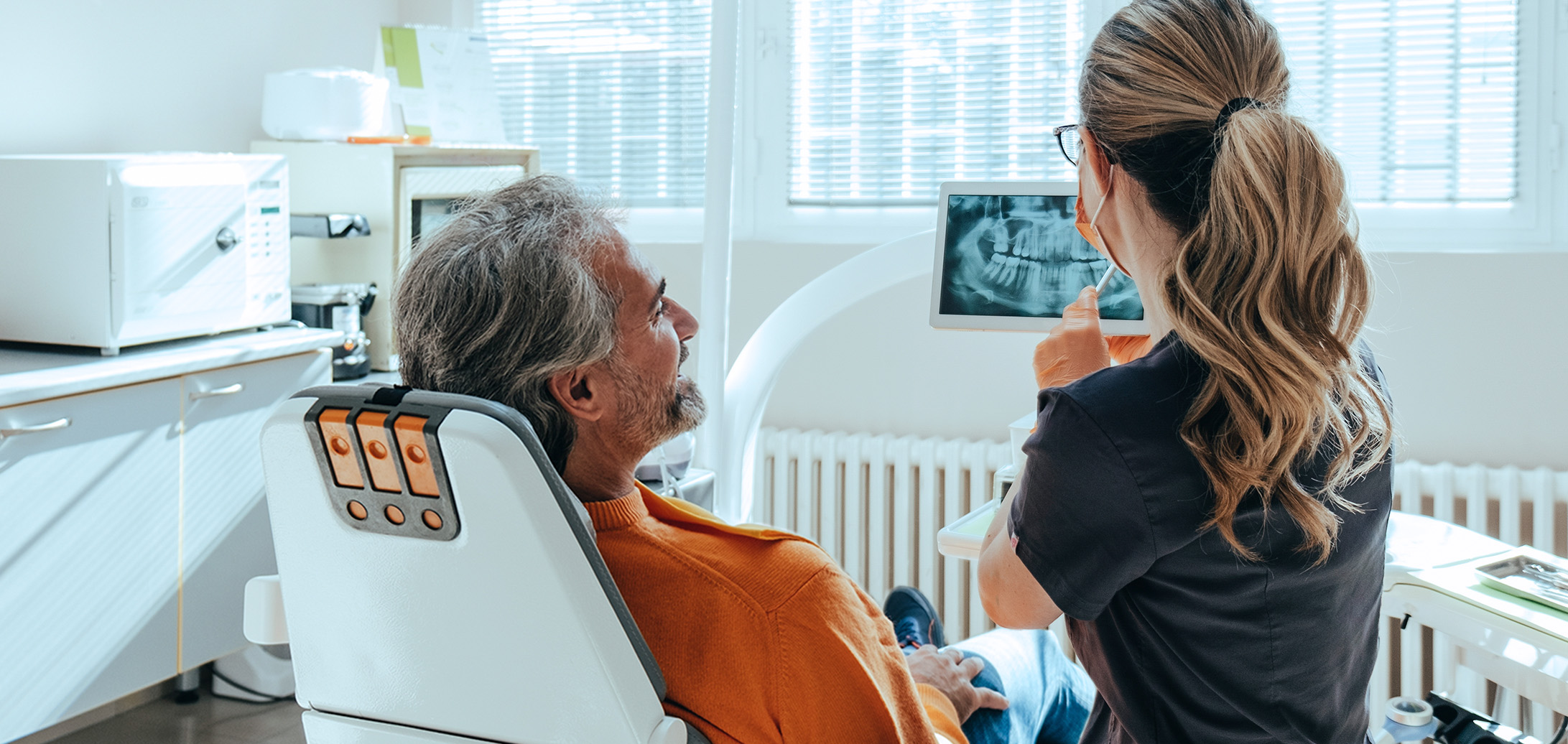CBCT vs. Traditional Dental X-Rays: Exploring The Advancements And Benefits

When you visit your dentist, you may be familiar with traditional dental X-rays, which are two-dimensional images of your teeth and jawbone. However, there’s a newer technology called cone beam computed tomography (CBCT) that offers a more detailed and three-dimensional view of your oral structures. This article explores the advancements and benefits of CBCT compared to traditional dental X-rays.
What is CBCT?
A cone-shaped X-ray beam is used in a CBCT scan to take several images of your teeth and jawbone from various angles. These images are then reconstructed into a three-dimensional model, which allows your dentist to see your oral structures in greater detail than with traditional dental X-rays.
CBCT has a wide range of applications in dentistry, including:
- Impacted teeth: CBCT can be used to locate impacted teeth, which are teeth that are trapped in the jawbone and cannot erupt into the mouth. This information can be helpful in planning the removal of impacted teeth.
- Jawbone fractures: CBCT is a helpful tool for determining the severity of jawbone fractures and preparing for their treatment.
- TMJ disorders: CBCT can be used to diagnose and evaluate TMJ disorders, which are pain and dysfunction in the temporomandibular joints.
- Dental implant planning: The placement of dental implants can be accurately planned with the help of CBCT, which offers a comprehensive view of the jawbone.
- Orthodontic treatment: CBCT is a useful instrument for evaluating tooth alignment and designing orthodontic procedures.
What are the Benefits of CBCT?
CBCT scans offer a three-dimensional perspective, revolutionizing the way dentists approach diagnosis and treatment planning. The benefits of CBCT include:
-
Precision Unmatched
CBCT scans offer a unique advantage by providing a 3D view of oral structures with unparalleled precision. Unlike regular X-rays, CBCT scans capture detailed images of bone density, tooth roots, and surrounding tissues, allowing for a thorough and precise evaluation. This level of accuracy is crucial in detecting conditions that traditional imaging techniques may miss.
-
Reduced Radiation Exposure
In healthcare, safety is of utmost importance. CBCT scans are a solution to the worries of radiation exposure that come with traditional X-rays. With CBCT technology, high-quality images can be produced with significantly lower radiation doses. This makes CBCT scans a safer option, especially for patients who need frequent imaging, like those who are undergoing orthodontic treatments.
-
Enhanced Diagnostic Capabilities
CBCT scans excel in their ability to capture intricate details, making them a diagnostic powerhouse for dentists. From identifying impacted teeth to assessing temporomandibular joint disorders, CBCT scans provide a more comprehensive understanding of oral conditions. The enhanced diagnostic capabilities empower dental professionals to tailor treatment plans with precision, improving overall patient outcomes.
-
CBCT Applications in Implant Planning
Dentists can now assess bone density and volume accurately with the 3D images provided by CBCT technology. This detailed information is vital for ensuring precise implant placement, minimizing complications, and improving the overall success of dental implant procedures.
-
Comparing Costs: CBCT vs. Traditional X-Rays
Traditional X-rays usually have lower initial costs, making them easier to afford. However, the long-term benefits of CBCT scans, such as fewer retakes and better diagnostic accuracy, make it a more cost-effective option.
-
Patient Experience and Comfort
Dental care prioritizes patient experience, and CBCT scans provide a faster and more comfortable imaging process than traditional X-rays. This streamlined procedure reduces chair time and contributes to a positive experience, aligning with the trend of patient-centric care in modern dentistry.
-
Patient Education and Informed Consent
CBCT scans provide patients with a precise visual depiction of their dental conditions, which promotes better communication between the dentist and the patient. This leads to a greater comprehension of the diagnosis and recommended treatments, resulting in more engaged patients who are more likely to take an active role in their oral healthcare choices.
-
Incorporating CBCT Into Your Practice
Thorough planning and staff education are crucial for dental professionals who want to incorporate CBCT technology into their practice. It’s important to familiarize both dentists and staff with the software and interpretation techniques used for CBCT scans to ensure a smooth transition. Investing in education will pay off by maximizing the benefits of this advanced imaging technology, resulting in better patient care and diagnostic outcomes.
Considerations for Choosing CBCT: Which is Right for You?
Whether CBCT or traditional dental X-rays are right for you will depend on your individual needs. While CBCT offers several benefits over traditional dental X-rays, there are a few things to consider before choosing this type of imaging:
- Cost: CBCT scans typically cost more than traditional dental X-rays.
- Radiation exposure: While CBCT scans use less radiation than traditional dental X-rays, they still expose you to some radiation.
- Not always necessary: CBCT scans are not always necessary for routine dental check-ups. Your dentist will determine if a CBCT scan is right for you based on your individual needs.
Takeaway
CBCT is a valuable tool that can be used to diagnose and treat a variety of dental problems. It offers several advantages over traditional dental X-rays, including three-dimensional imaging, reduced radiation, and digital imaging. If you’re concerned about your oral health, talk to your dentist about whether CBCT is right for you.

